For over 20 years, Art Metal in Toronto has been the top choice for custom ornamental fences in Toronto and the GTA. We create beautiful and secure ornamental fences that enhance your property. Our excellent craftsmanship, reflected in our 4.9-star Google rating, invites you to experience the high quality of our ornamental fences firsthand!
Order Ornamental Fences in Toronto
Google Customer Reviews
How Much Does an Ornamental Fence Cost in Toronto?
The typical cost of an ornamental fence in Toronto typically ranges from $100 to $250 per linear foot of fencing. The total cost, however, may vary depending on several additional factors, including the complexity of the design, the length and height of the fence, the quality of the materials used, any custom features or detailing, and the installation requirements.
Always consider these factors for a comprehensive understanding of the final investment for your ornamental fence.
Are You Looking For Ornamental Fences In Toronto?
Custom Ornamental Fences In Toronto
Why Choose Art Metal Ornamental Fence Contractors?

Choose Art Metal for top-quality installation of ornamental fences in Toronto. Renowned for our exceptional craftsmanship, wide range of customization options, and outstanding customer service, we lead the industry in enhancing the security and beauty of your property. Contact us to transform your space with our premium ornamental fence solutions!
- Completed over 12,000 successful projects throughout the GTA.
- Consistently ranked #1 on Homestars.com from 2010 to 2024.
- Committed to serving Toronto and the GTA with over two decades of expertise.
- Featured on numerous well-known home improvement TV shows.
- We offer a lifetime warranty and provide a complimentary estimate.
Creative Ornamental Fence Designs in Cast and Wrought Iron Toronto
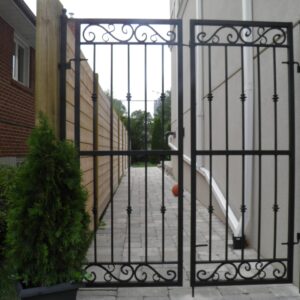
There are several fence design ideas in the market in today’s time. They are made and enhanced using different materials. Most of the options presented to consumers are creative ornamental fence designs in cast and wrought iron. However, there are still people who do not know the different between cast and wrought iron.
Knowing the different features of the two is essential. Cast iron is melted and poured in a mold. It is then cooled to solidify. On the other hand, a wrought iron is heated and shaped using equipment and tools. The fundamental difference between the two is their production method. Here is a quick comparison of the two for your creative ornamental fence designs in cast and wrought iron needs.
- Cast iron – This type of iron is an alloy of metal with at most four percent of carbon. It is formed through smelting. The liquid produced is placed in a mold to solidify. The final product is known to be strong but can be a little brittle. There are internal stress points which make it prone to fracture. Thus, it is not advisable to bend or stretch it.
- Wrought iron – This type of iron is made through repeated heating of the material. Using tools and equipment, the iron can be shaped according to the requirement. Due to its composition, it is known to be highly malleable.
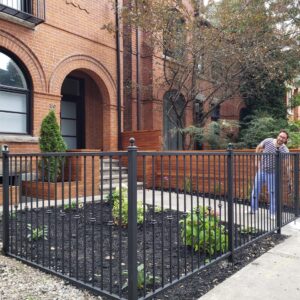
Ornamental Fence Design Ideas
How to Shop for an Ornamental Fence in Toronto
An ornamental fence is as much a decoration as a line of defense for your property. Therefore, when looking for it, you must consider not only the beauty of the design but also the durability and strength of the structure. Choose your fence builders wisely, as this fixture is a large investment, and buying a low-quality product would cost you a small fortune in future repairs and replacements.
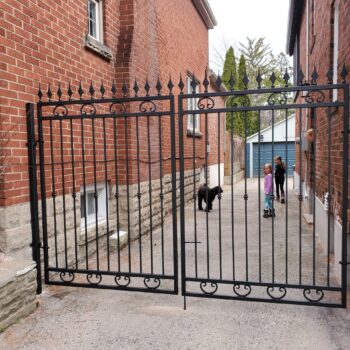
Ornamental Garden Fence: What Is the Most Important Factor?
Ornamental garden fencing is an important part of the garden design. Therefore, the landscaping style you choose is the most important factor to consider when shopping for this fixture. If you have a big piece of land and need to cut down the overall cost of the project, you can opt for fewer ornamental elements on the fencing itself. You can make up for it by installing elaborate metal garden gates that would make the perfect entrance to your special natural retreat. We at Art Metal Workshop have many original decorative garden fencing ideas that we would be happy to share with you.
Why Buy an Ornamental Metal Fence
Of all the materials available today, ornamental metal fencing is the most popular in Toronto and the world at large. The reasons for this are malleability and durability of metals. Each type of metal has its own unique strengths, so you have numerous options to choose from. As they vary in price, you can pick something that you would be able to afford.
As you are looking for a decorative fence, the most important factor to consider is the appearance. Steel fence designs look best at contemporary properties, while wrought and cast iron enhance the elegant beauty of historic buildings.
Ornamental Aluminum Fencing: Pros and Cons
There is no doubt that aluminum is a fantastic material for exterior fixtures as it’s impervious to corrosion. It’s also lightweight and easily malleable, so, aluminum balcony railings, for example, can be incredibly intricate. However, this metal lacks the sturdiness of iron.
Ornamental Iron Fencing: Benefits and Types
An ornamental iron fence is a true classic that can stand strong and beautiful for centuries. You just need to choose between a wrought iron piece, which is sturdier and much more durable, or cast iron, which can be molded to any type of design.
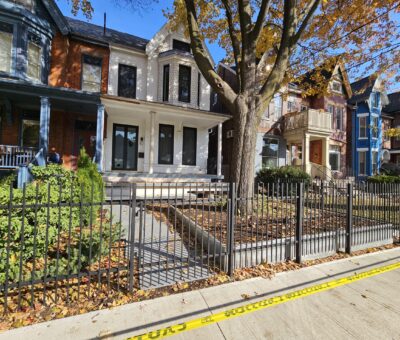
The Best Decorative Fencing in Toronto from Art Metal Workshop
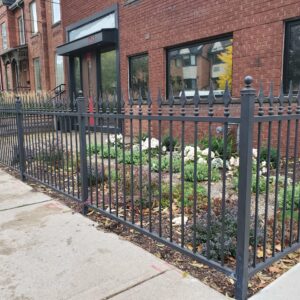
The ornamental fence costis determined by the complexity of design and structure itself as well as its size. Our company can create custom decorative fencing based on your ideas and guarantee the quality and durability of the fixture, as well as help you create a piece that would fit within your budget.
From Bushes to Ornamental Fences: What You Might Not Know About the Origin of Fences
Fences were used centuries ago to set the boundaries in properties and to protect the livestock. Fences were the early expression of putting up borders to distinguish a person or a village’s territory. In Australia for example, people built fences around a 100 acres of land that hold horses and bullocks in the 1840s and some advocates thought building fences is cheaper than replacing shepherds. Shepherds in Australia were later replaced by people called boundary riders and fenced paddocks.
In the United States, the ballooning population later led to the need to set up laws requiring livestock to be fenced inside the property. The fence laws on the east coast were patterned after the British common laws, while the west coast’s policies were influenced by Spanish law and tradition. Generally, fences are put up in a surveyed property. Each state in the US has its policies regarding fencing.
Old Types of Fences
Before polished wood and durable iron ornamental fences, tree branches and bushes were the earliest types of fences. Here are some of the old types of fences in the rural area that you might not know about:
- Deadwood Fence (also called Brush Fence) – The deadwood fence was documented as the most primitive type of fence. It is made of dug trees and bushes that were collected and piled into lines. Branches were then to form a structural barrier.
- Chock-and-log – This was also called as the chock and rail fence and did not require fastening or splitting. It was very sturdy as timbers with “chocks” cut out on the log’s surface are made to fit with the other logs. The overlap of logs is repeated up to three or four logs placed on top of the other.
- Zigzag Fence – The zigzag fence was also referred to as the cockatoo fence or the forks-and-poles fence. It used a young tree or a tree with a slender trunk. Every nine feet, a fork trestle was formed by placing a rail inside the fork and another rail on top. It was used for small yards like horse and milking yards.
- Dog-leg Fence – The rails of the dog-leg fence were sometimes fastened to trees, which acts as posts. It was made up of 9-foot long pine logs with a V-cut on top and bottom which are fit together like chock-and-log.
- Palisade Fence – Palisade fence was constructed by placing tree trunks cut with the same length, usually between seven to 10 feet, on an excavated trench. The trunks were fastened usually by rawhide strips and later on by wire or nail.
- Double Post-and-Rail – It is constructed by sinking two posts with six inches apart on the ground. The posts were tied together.
- Basket Fence – This was also called as Lattice Fence or Woven Hurdles and these were constructed by sinking posts on the ground and interweaving split saplings between them.
- Drystone Wall – Drystone walling was made by digging at least two feet of trench to serve as the foundation. Stones were built up on top of the other measuring up to four to five feet high.
The Timeless Elegance of Wrought Iron: Its Birth and Revival
Steel production improved greatly during the 1870s which led to the production of large volumes of steel wires. In places where timber was scarce, the use of wire fences, board, picket, and post and pole became more popular. However, records show that the domestic forge in America already existed in the 1640s. In the 18th century, these forges made wrought iron and cast iron, which is usually used in ornamental fences.
The use of wrought iron returned to popularity with the rise of the Colonial Revival style and the arts and crafts movements. Between 1880 to =1940, American architecture’s Eclectic Movement, or the Century Revival brought back earlier styles and traditions in architecture.
Fence Building Materials
Fences come in a wide variety of styles and give a distinct look in a property. Building fences have three basic materials to choose from – wood, metal, and PVC or vinyl.
- Wood fences – Wood fences are the usual choice of those who want to go for a more natural look. It is easy to install and is more affordable. There are various types of wood fences:
- Stockade
- Shadowbox
- Picket
- Split rail
- Solid board
2. Metal fences – Metal fence provides safety and privacy. It is usually made up massive posts, locks, balusters, and sharp caps. It is also preferred in securing gardens. The different types of metal fences will be discussed more in this article below.
3.Vinyl fences – While it comes with a price compared to other types of fences, a vinyl fence is maintenance free. You do not need to repaint it. Its color lasts long. It does not rot and it is also strong and flexible.
Cast Iron, Wrought Iron, and Steel: What’s the Difference?
Ornamental fences are made usually in cast iron and wrought iron. The table below shows the comparison between cast iron and wrought iron.

Aside from these, wrought iron has higher resistance to breaking under tension (tensile strength) than cast iron and is good in manufacturing horizontal beams. Wrought iron can also withstand extreme weather conditions and would not corrode nor rust easily. However, cast iron is an easier material to work with, while the wrought iron is labor intensive.
Other Types of Ornamental Fence
There are three other types of materials used in ornamental fences – ornamental aluminum, and ornamental plain steel. Here is how they differ.
- Ornamental plain steel – This is the most cost-effective fence with each panel comprised of black-painted plain steel. It is lighter and easy to maneuver due to its limited paint coating.
- Ornamental aluminum – This type guarantees no rusting and is great to use in marine environments. It is also lightweight and malleable. However, aluminum will not work in areas with the severe weather because it lacks the sturdiness of the iron.
The Various Designs of Ornamental Fences
The motifs and designs of ornamental fences are classy. Here are some common fence designs in the market:
- Geometric style – This style uses geometric shapes and is similar with the designs of floor tiles.
- Lattice pattern – This is a common fence design made up of horizontal border making it sturdier and great for background installations.
- Rustic design – Rustic fences come in the shade of brown, copper, or red and they blend well in gardens.
- Contemporary – Contemporary designs add a touch of eccentricity to the exterior. It might feature wood panels on metal fences.
What to Consider When Choosing a Fence
When you are planning to build a fence, you should base your decision on the following factors: purpose, preference, and budget.
- Purpose – When choosing what type of fences to build, you should know your purpose. Are you building a fence to provide you with privacy, security, or to improve the appearance of your property? Unlike solid fences, ornamental fences have open designs and can be designed intricately. You may opt for ornamental fences when you like to put a style to your property and keeping it secured.
- Preference in style – Consider the architectural style of your house and the landscape outside when you decide on the style of your fencing. There are a variety of choices in materials and styles of fences.
- Budget – When deciding on your next fencing project, take note of the cost of maintenance and installation. For those who prefer a classic style that can last for a long time, ornamental fences made from cast iron or wrought iron provide durable exterior fixtures.
How High Should Your Fence Be?
Before constructing fences, check your local state zoning or building codes to know the requirements. In Austin City, Texas, for instance, you will not be required to get a permit if you are building a fence that measures only 8 feet or below as long as it is not located within a flood-prone hazard area. Ornamental fences, on the other hand, can be built higher than 8 feet.
For public assembly fencing, however, solid fence measuring over more than 6 feet needs the approval from the constructing fencesCity of Austin’s Zoning Review Department. If you are unsure of the height requirement of fences in your area, you may contact the local authority planning office.
FAQs About Ornamental Fences
What are the benefits of an ornamental fence?
Ornamental fences offer both aesthetic appeal and functional security. They can enhance the look of your property while providing a durable and reliable barrier.
What materials are commonly used for ornamental fences?
Ornamental fences are often made from materials such as wrought iron, aluminum, and steel. Each material offers different benefits in terms of durability, maintenance, and appearance.
Can ornamental fences be customized?
Yes, ornamental fences can be highly customized in terms of design, height, and finish. You can choose from a variety of styles and decorative elements to match your property’s aesthetic.
How do I maintain an ornamental fence?
Maintenance for ornamental fences typically includes regular cleaning to remove dirt and debris, as well as periodic inspections for rust or damage. Repainting or applying a protective coating can help prevent corrosion.

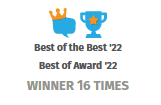








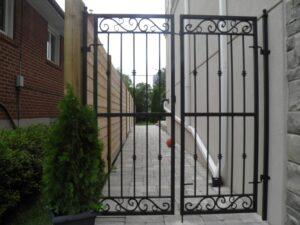
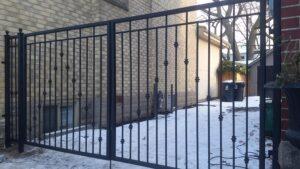
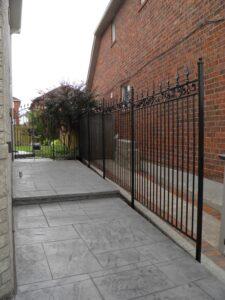
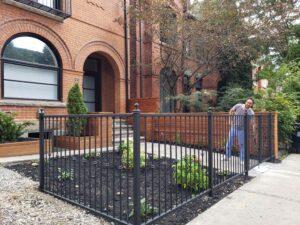
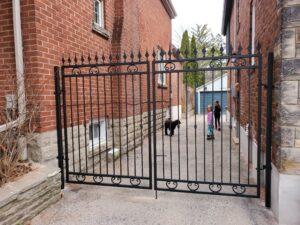
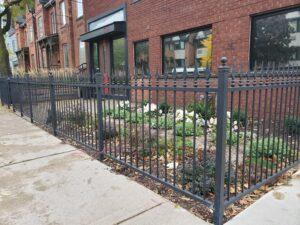
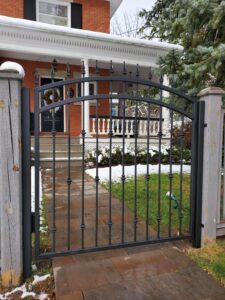
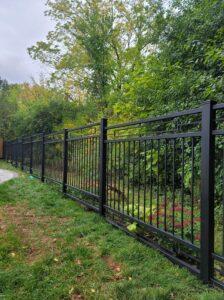
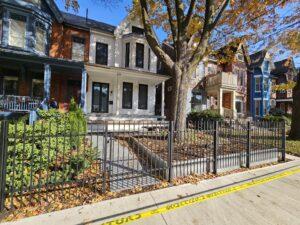

 Chat
Chat 








